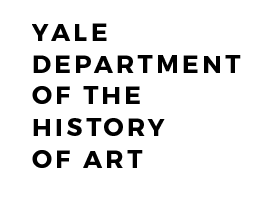Why The Underground Railroad Matters

Why The Underground Railroad Matters
Steven Nelson’s 3,000 Mile Roadtrip Revealed Fascination and Relevance
“Why does the Underground Railroad matter and what does it tell us about American life?” asked Steven Nelson, Dean of the Center for Advanced Study in the Visual Arts at the National Gallery of Art in Washington, D.C.
His answer was found in a 3,000-mile roadtrip of Underground Railroad sites that began in 2009 in Mobile, Alabama, continuing north through several states to its final destination in St. Catharines, Ontario. Nelson shared his observations, both personal and academic, at the History of Art Department’s Sylvia Ardyn Boone Lecture on Nov. 13 at the Loria Center,
Nelson eventually saw his journey in a larger contemporary context as a repository for American values in an ever shifting social and cultural terrain that included the election of the first Black president, violence against Black people, an upsurge in white supremacy and the pandemic.
The journey was originally conceived as a travelogue and material for his latest book project, which focuses on the Underground Railroad and American myth-making
“As an adult art historian who has spent more time in Africa than in the American South,” he said, “I wanted to see what the Underground Railroad looks like with the full understanding that it may not actually look like much of anything.
“But as I made the trek I realized that the Underground Railroad’s interest and import far exceeded the places I visited, the archival sources, and stories I found,” said Nelson, who prior to becoming the Dean of the Center served as Professor of African and African American art history at UCLA and directed the African Studies Center there.
During the journey Nelson visited Underground Railroad locales and conducted interviews, studied lore, discovered extant escape narratives, visited archives, and studied art and literature of the period.
He noted that it is impossible to chart definitive Underground Railroad routes among the many safe houses and the multi-racial networks of aid because of the critical need for obscurity to protect the enslaved who took flight. “Its unknowability speaks to its extraordinary success,” he said.
The journey took him in to Slave Haven Underground Railroad Museum in Memphis, to Ohio where he searched for an elusive town called Africa, to Buffalo and its Michigan Street Baptist Church and its Underground Railroad exhibit. Interactive tours included “Take a Trek in My Shoes” and “Motherland Connextions.” His journey ended with his traveling over the Peace Bridge into Canada.
“The Underground Railroad is perhaps the most American of stories,” he said, “one that, for all of the research conducted on it, is steeped in fantasy, fiction, romance, and myth.”
Along the way Nelson discovered myths and unverifiable details surrounding such Underground Railroad iconography as quilts, monuments and land markers.
Nelson found that his pilgrimage, “with monuments that may or may not be ‘real,’ with landmarks that might be impossible to find, with a land that has largely kept the secrets of the Underground Railroad, is not just about links between Black pasts and presents, and not just about seeing moments where we win. This is about testimony, about bearing witness to the longevity and effects of violence, trauma, and transcendence.”
As he continued his journey he began to understand the Underground Railroad as a network that functions on multiple levels: intellectual, social, and spiritual. The Underground Railroad’s central place, he said, “is in the stories we tell ourselves and one another.”
Considering this complex intellectual and social terrain, he said the project showed the continued importance of the Underground Railroad in American life “with an eye towards understanding why it still registers so deeply in so many lives….This voyage is an immersion into a world of the conflicts and messiness of our history and finding there the tools to effect change.”
— FRANK RIZZO
